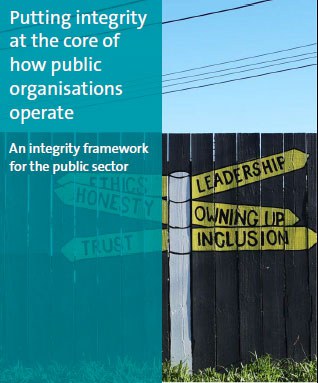Measuring and reporting progress
Why it matters: Strengthens commitment and drives improvement
Ensuring that a culture of integrity is an integral part of the day-to-day running of an organisation requires regular monitoring and reporting, not only of compliance with policies and processes but also monitoring the "health" of the organisational culture. This requires a focus not only on what is done but also on how things are done.
It is important for our organisation to start the work strengthening integrity and then ensuring there are regular reviews of what is in place. It doesn’t need to be perfect straight away but getting feedback is a good thing.”
Local authority senior leader
What it looks like: Evaluating whether the desired culture is being demonstrated and can be seen through staff behaviours and work processes
Measuring a system's progress means assessing the direction of travel, rather than measuring specific outputs and outcomes. Mechanisms need to be put in place to ensure that progress is made to reduce any integrity gap.
Organisations may already have a regular review or monitoring process that spans many of the components of this integrity framework. The challenge is to bring that monitoring together, in combination with reporting on the organisational culture, and report it together, to provide a system perspective. This will allow for measuring traction and momentum in building and maintaining a culture of integrity within the organisation.
When considering how to measure progress, there is different data that can be collected, such as incident reports, types of incidents, investigation outcomes, exit interviews, use of employee counselling and support services, the outcome of focus groups, and internal audits.
The level of maturity in the organisation around the topic of integrity is constantly growing, so current policies and practices need to be regularly reviewed and reframed and all staff need to be engaged in the conversation.”
Local authority manager
Organisations can also use tools such as staff engagement or culture surveys, "pulse" surveys, or other forms of feedback to provide an indication of culture across the workplace. However, the perceptions of staff are usually the slowest to show improvement. Most people will shift their thinking only after new behaviours have led to observable change. This means that staff surveys should be only one part of the monitoring that is undertaken.
The importance of "soft" as well as "hard" monitoring of culture should not be underestimated. Data collection, formal feedback, and surveys should be combined with those in governance or leadership roles regularly seeking out informal feedback from staff. Through regular and genuine engagement, leaders can receive a wealth of insight into the culture in their workplace and their own leadership performance. This can help identify issues for further exploration that might not otherwise emerge through formal monitoring or data analysis.
The Institute of Internal Auditors lists the following cultural characteristics that are relevant to any measurement of culture:
- Positive tone from the top: Executive management promote the organisation's values and models those values.
- Clear communication: Management reinforces the values and culture through clear communication of expectations.
- Open dialogue: Management actively gathers and listens to feedback.
- Staff participation: Staff are engaged in objective-setting and strategy discussions.49
Finally, it is important to seek multiple sources of information and to close the loop, so staff know what's going on and see leadership continuing to prioritise improvement of the organisation's culture of integrity.
It is important to look at the lessons learned and feed them back into the system. The Integrity team have been very active in system improvement. Giving complainants information on the process is the direct result of a feedback loop.”
Government department integrity specialist
 |
It's worth considering...
|
49: The Institute of Internal Auditors (2019), Auditing Culture.


